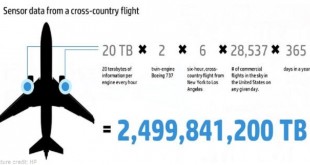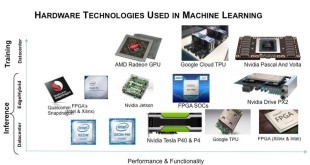Introduction: The aviation industry, known for its adherence to precision and safety, is embracing the digital era with open wings. In an age where instant accessibility, interactivity, and personalization are key aspects of service-oriented businesses, airlines are leveraging digital technologies to enhance customer experiences, improve efficiency, and generate additional revenue. …
Read More »The Double-Edged Sword: AI in Terrorism and Counterterrorism
Introduction In an era dominated by technological advancements, the influence of artificial intelligence (AI) is extending into various aspects of our lives. While AI has shown immense potential in areas like healthcare, education, and business, it also raises concerns about its potential misuse. One such area of concern is the …
Read More »Revolutionizing Wireless Fronthaul in Industrial Environments: Harnessing Terahertz Frequencies
Introduction: The relentless growth of the Internet of Things (IoT) has driven the demand for high-speed, reliable, and low-latency wireless connectivity in indoor industrial environments. Cell-free massive multiple-input multiple-output (CF-mMIMO) networks have emerged as a promising solution to meet these demands, offering enhanced network capacity and coverage. However, CF-mMIMO networks …
Read More »Revolutionizing Real-Time Machine Learning: The Rise of Dedicated AI Chips and Neuromorphic Computing
Introduction: Artificial Intelligence (AI) has been a transformative force, aiming to enhance computers and robots with capabilities surpassing human intelligence. Tasks such as learning, reasoning, decision-making, creativity, knowledge extraction, and data prediction have been the focal points of AI development. Within the vast field of AI, machine learning (ML) has …
Read More »Transforming Power Transmission with Alternating Direct Current (ADC) and AI
Introduction: In the dynamic landscape of energy technology, Alternating Direct Current (ADC) has emerged as a transformative force, promising lossless power transmission. This article explores the synergy between ADC and artificial intelligence (AI), unraveling how this innovative approach is reshaping the future of clean and efficient electricity distribution. The Challenges …
Read More »Unveiling the Future: Holograhy moving to Real-Time 3D Holograms on Your Smartphone
Introduction: The marvel of 3D hologram technology has evolved from static, monochromatic images to dynamic, real-time displays that are now making their way onto smartphones. Our eyes, the sophisticated light detectors that capture the essence of the world around us, are now able to perceive and interact with three-dimensional holograms …
Read More »Unlocking Quantum Frontiers: The Role of Quantum Algorithms in Revolutionizing Computing
In the intricate realm of technology, Quantum Technology (QT) emerges as a transformative force, harnessing the unique principles of quantum mechanics to manipulate quantum systems such as atoms, ions, electrons, photons, or molecules. At the core of this quantum revolution lies the quantum bit or qubit, the fundamental unit of …
Read More »Shielding the Mind: DARPA’s Intrinsic Cognitive Security (ICS) Program Fortifies Mixed Reality Systems
In the realm of mixed reality (MR), where the physical and digital worlds seamlessly intertwine, a new frontier of security is emerging. Led by the Defense Advanced Research Projects Agency (DARPA), the Intrinsic Cognitive Security (ICS) program aims to safeguard MR systems from cognitive attacks, a novel form of cyber-intrusion …
Read More »Revolutionizing Warfare with AI: DARPA Invests in Strategic Chaos Engine for Planning, Tactics, Experimentation and Resiliency (SCEPTER)
The U.S. Defense Advanced Research Projects Agency (DARPA) is spearheading a groundbreaking initiative to harness the power of artificial intelligence (AI) in strategic battlefield decision-making. With an investment of millions in research funding, DARPA’s Strategic Chaos Engine for Planning, Tactics, Experimentation and Resiliency (SCEPTER) program aims to develop AI technology …
Read More »Illuminating Perspectives: Exploring the Wonders of Computer Vision Technology and Applications
Introduction: In the realm of artificial intelligence, computer vision stands out as a transformative technology, empowering computers to perceive and interpret the visual world around us. By harnessing the power of machine learning and image processing techniques, computer vision systems can extract meaningful information from digital images and videos, bridging …
Read More » International Defense Security & Technology Your trusted Source for News, Research and Analysis
International Defense Security & Technology Your trusted Source for News, Research and Analysis



